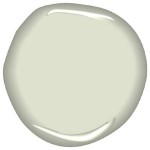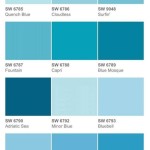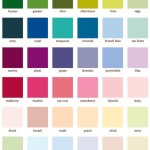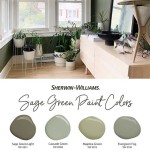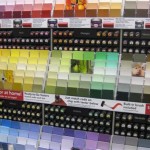What Is The Best Way To Match Paint Color Already On Wall?
Matching a paint color already applied to a wall is a common task faced by homeowners, renters, and contractors alike. Whether it is for touch-ups, extending the color to a new section of the wall, or replicating the color scheme in a different room, achieving a seamless match requires careful planning and execution. The success of this process hinges on understanding the potential challenges, gathering the right tools, and employing effective color-matching techniques. Multiple factors contribute to the difficulty of accurately replicating an existing color, including fading due to sunlight exposure, variations in paint sheen, and the accumulated effects of dirt and grime over time.
Successfully matching paint color involves a combination of visual assessment, utilization of technology, and reliance on the expertise of paint professionals. There are several methods to accomplish this goal, each with its own set of advantages and limitations. Understanding these methods and their respective applicability to different situations is essential for achieving the desired results. This article will explore the most effective approaches to matching paint color on a wall, providing a comprehensive guide to navigating the process with accuracy and efficiency.
Obtaining a Sample: The Foundation of Accurate Matching
The cornerstone of any successful paint color matching endeavor is obtaining a physical sample of the existing paint. This sample serves as the reference point against which all subsequent color comparisons and analyses will be made. Without a viable sample, the accuracy of the match is significantly compromised. There are several ways to procure a paint sample, each with its own procedural considerations.
The ideal method involves removing a small section of the painted wall. This approach provides the most accurate representation of the existing color, as it directly reflects the actual pigment and sheen. To extract a paint chip, use a sharp utility knife to carefully score a square or rectangular section of the wall, roughly one to two inches in size. The cuts should penetrate through all layers of paint to the underlying substrate (e.g., drywall, plaster). Gently pry the paint chip away from the wall, being careful not to damage the surrounding area. Place the paint chip in a clean, sealable bag or container for transport to the paint store. This method provides a true representation of the paint color and condition, including any accumulated dirt or discoloration.
If removing a section of the wall is not feasible, another option is to scrape a small amount of paint from an inconspicuous area. This can be done using a putty knife or scraper. Choose an area that is hidden from view, such as behind furniture or in a closet. Carefully scrape off a small amount of paint, ensuring that it contains all layers of the existing coating. Collect the scraped paint in a clean container or bag. This method is less precise than removing a chip, as the sample may be smaller and more prone to contamination, but it can be a viable alternative when destructive sampling is not permitted.
In situations where neither of the above methods is practical, consider removing a painted item that is detached from the wall, such as a light switch cover plate or a section of trim. These items offer a convenient and non-destructive way to obtain a paint sample. Simply detach the item and bring it to the paint store for color matching. Be sure to clean the item before submitting it to the paint store, removing any dust or debris that could affect the color analysis.
Regardless of the method used to obtain the paint sample, it is crucial to handle it with care to avoid damage or contamination. Protect the sample from exposure to sunlight, moisture, and other environmental factors that could alter its color. Store the sample in a clean, dry container until it can be taken to the paint store for matching. It is also important to label the sample clearly, indicating the location from which it was taken and the date of collection. This information can be helpful in tracking the paint color and ensuring consistency across different areas of the project.
Utilizing Technology: Spectrometers and Color Scanners
Modern technology offers sophisticated tools for matching paint colors with remarkable accuracy. Spectrometers and color scanners are devices that use light and sensors to analyze the spectral properties of a paint sample and identify its precise color composition. These devices can significantly improve the efficiency and accuracy of the color-matching process, particularly when compared to purely visual methods.
A spectrometer works by shining a beam of light onto the paint sample and measuring the wavelengths of light that are reflected back. The resulting spectral data are then compared to a database of known paint colors to identify the closest match. Spectrometers are capable of detecting subtle variations in color that may be imperceptible to the human eye, making them an invaluable tool for achieving a near-perfect match.
Color scanners, also known as colorimeters, operate on a similar principle, but they typically use a smaller light source and sensor. Color scanners are more portable and user-friendly than spectrometers, making them suitable for both professional and DIY use. These devices can be used to scan a paint sample and instantly display the corresponding color information on a smartphone or tablet. Some color scanners can even suggest coordinating colors and paint schemes.
When using a spectrometer or color scanner, it is essential to follow the manufacturer's instructions carefully to ensure accurate results. The device should be calibrated regularly to maintain its accuracy. The paint sample should be clean and free of any debris that could interfere with the scanning process. It is also important to take multiple readings from different areas of the sample to account for any variations in color. The data provided by these devices are often cross-referenced with databases of commercially available paints to find the best possible match from a specific brand or product line. Some paint stores have integrated these technologies directly into their color matching process, offering customers a precise and efficient way to replicate existing paint colors.
While technology provides a significant advantage in color matching, it is not a foolproof solution. The accuracy of the match depends on the quality of the device, the calibration process, and the condition of the paint sample. It is always recommended to verify the match visually, using a trained eye to assess the accuracy of the color. In some cases, minor adjustments may be necessary to achieve a perfect match.
The Expertise of Paint Professionals: The Human Element in Color Matching
Despite the advancements in color-matching technology, the expertise of paint professionals remains an indispensable component of the process. Experienced paint specialists possess a keen eye for color and a deep understanding of paint formulations, pigments, and application techniques. They can provide valuable insights and guidance that complement the capabilities of technology.
When bringing a paint sample to a paint store, consult with a paint professional to discuss the specific requirements of the project. Provide as much information as possible about the existing paint, including its age, sheen, and application history. The paint specialist can use this information to assess the condition of the paint sample and identify any factors that may affect the color-matching process. They can also offer advice on the best type of paint to use for the project, taking into account the surface material, environmental conditions, and desired finish.
Paint professionals can also perform a visual assessment of the paint sample, comparing it to a range of color swatches and using their expertise to identify the closest match. They can consider factors such as undertones, color temperature, and the influence of lighting on the perceived color. In some cases, they may recommend adjusting the formula of the matched paint to account for subtle variations in color or to achieve a specific effect.
In addition to their expertise in color matching, paint professionals can also provide valuable advice on paint application techniques. They can recommend the best tools and methods for achieving a smooth, even finish and offer tips on how to prepare the surface properly. They can also provide guidance on safety precautions and environmental considerations.
While technology can provide a precise measurement of a paint color, the human eye is still essential for judging the overall accuracy and aesthetic appeal of the match. Paint professionals can use their expertise to fine-tune the color and ensure that it complements the surrounding environment. In many cases, they can even create custom paint colors to meet specific design requirements. By combining the capabilities of technology with the skills and knowledge of paint professionals, it is possible to achieve the highest level of accuracy and satisfaction in paint color matching.
Furthermore, consider the paint's sheen when seeking a match. A flat paint will appear different from a semi-gloss even with identical pigmentation due to how they reflect light. Ensure the new paint matches the existing sheen as closely as possible to maintain a consistent visual appearance.
Remember to test the matched paint in a small, inconspicuous area of the wall before committing to the entire project. Apply a small amount of paint and allow it to dry completely. Evaluate the color under different lighting conditions to ensure that it matches the existing paint. If the match is not perfect, consult with a paint professional to make further adjustments.
By following these steps, you can increase the likelihood of achieving a seamless paint color match, ensuring a professional and aesthetically pleasing result. Careful preparation, the right tools, and the guidance of experienced professionals are all key to success in this endeavor. Patience and attention to detail are also essential.

How To Match Paint Color 100 The Easy Way

How To Match Paint Color Already On Walls Angi

How To Match A Paint Color That S Already On Wall

How Easy Is It To Color Match Paint Let S Test And Review The Nix Mini Sensor Thrift Diving

How To Match Paint Already On Wall The Family Handyman

3 Ways To Match Paint Colors Wikihow

The That Ll Help You Paint Match An Already Painted Wall

3 Ways To Match Paint Colors Wikihow

How To Match Paint Colors

How To Color Match Paint 3 Ways Already On A Wall
Related Posts



